A triangular plate has two cavitiesone triangle and other rectangle. The plate is heated :
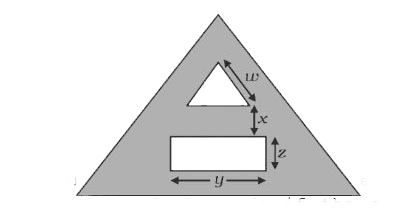
x increases, wzy decreases
xwzy all increase
w, z, y increase, x decreases
information is not sufficient
The correct Answer is:B
Solids (isotropic) expand on heating irrespective of holes in it.
Similar Questions
A uniform E exiest between two metal plates one negative and other positive. The plate length is l and the seperation of the plates is d.
(i) An electron and a proton start fron the negative plate and positive plane, respactively, and go the opposite plates. which one of them wins this race?
(ii) An electron and a proton start moving parallel to the plates towards the other end from the midpoint of the separation of plates at one end of the plates. Which of two will have greater deviation when they come out of the plates if they start with the
(a) same initial velocity
(b) same initial kinetic energy, and (c ) same initial momentum.
View SolutionMass is distributed uniformly over a thin triangular plate and positions of two vertices are given by (1,3) and (2,-4) .What is the position of 3 rd vertex if centre of mass of the plate lies at the origin?
View Solution
Knowledge Check
A triangular plate has two cavities , one square and one rectangular as shown in figure . The plate is heated.
_E01_066_Q01.png) Aa increase , b decreaseBa and b both increaseCa and b increase , x and l decreaseDa , b , x and l all increase
Aa increase , b decreaseBa and b both increaseCa and b increase , x and l decreaseDa , b , x and l all increaseThere is a rectangular metal plate in which two cavities in the shape of rectangle and circle are made, as shown with dimensions. P and Q are the centres of these cavities. On heating the plate, which of the following quantities increases?
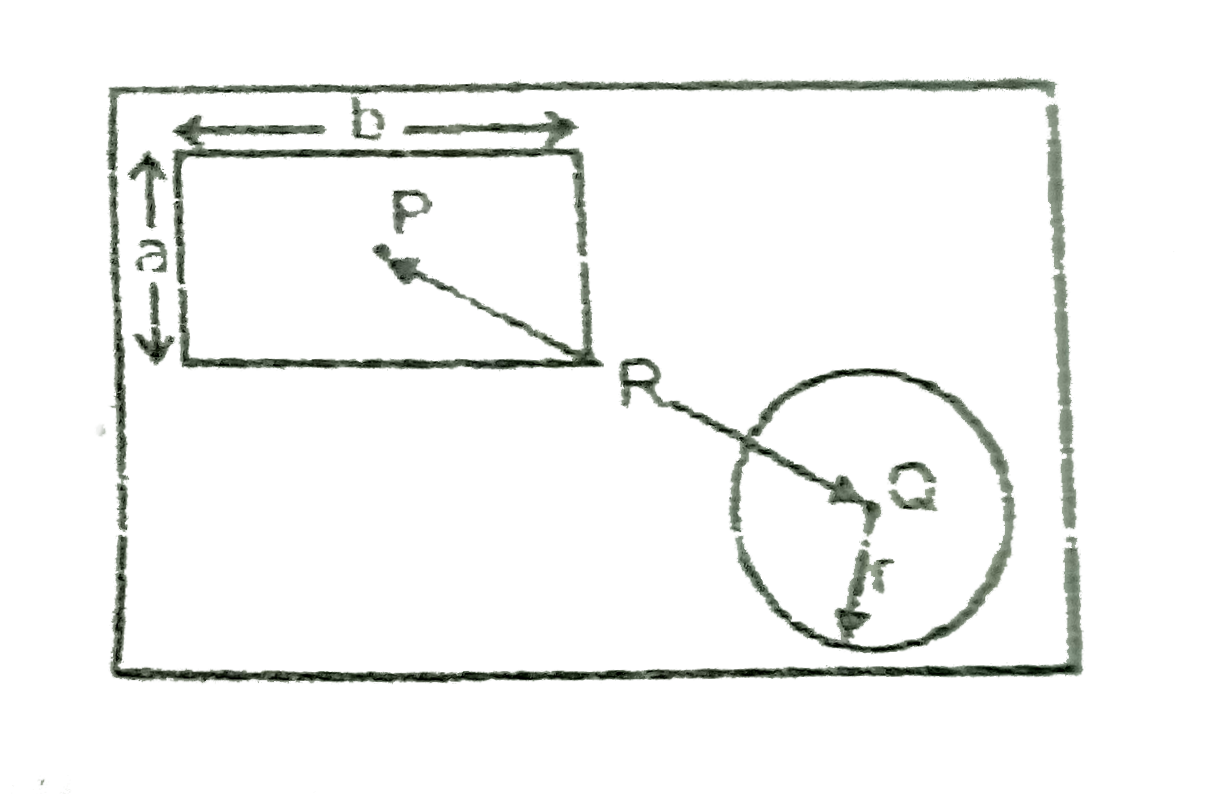 Aπr2BabCRDb
Aπr2BabCRDbTwo uniform plates of the same thickness and area but of different materials, one shaped like an isosceles triangle and the other shaped like a rectangle are joined together to form a composite body as shown in the figure. If the centre of mass of the composite body is located at the midpoint of their common side, the ratio between masses of the triangle to that of the rectangle is -
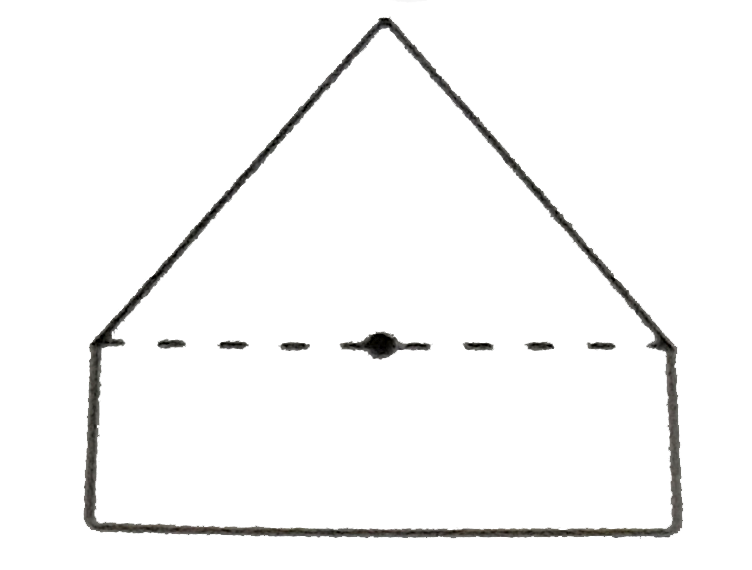 A1:1B4:3C3:4D2:1
A1:1B4:3C3:4D2:1
Consider a uniform rectangular plate. If a straight line is drawn, passing through its centre of mass (in the plane of the plate), so as to cut the plate in two parts – the two parts obtained are of equal mass irrespective of the orientation of the line. Can you also say that a straight line passing through the centre of mass of a triangular plate, irrespective of its orientation, will also divide the triangle into two pieces of equal mass ?
View SolutionThe triangular plate described in the last question has angle <A=θ. Now find its moment of inertia about an axis through A perpendicular to the plane of the plate.
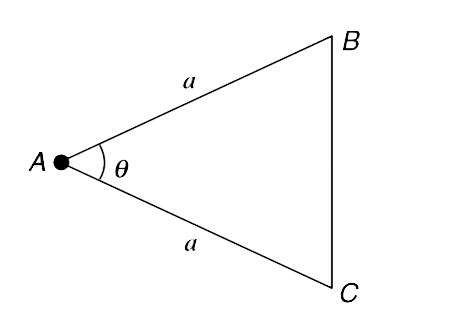
View SolutionABC is an isosceles triangle right angled at A. Mass of the triangular plate is M and its equal sides are of length a. Find the moment of inertia of this plate about an axis through A perpendicular to the plane of the plate. Use the expression of moment of inertia for a square plate that you might have studied.
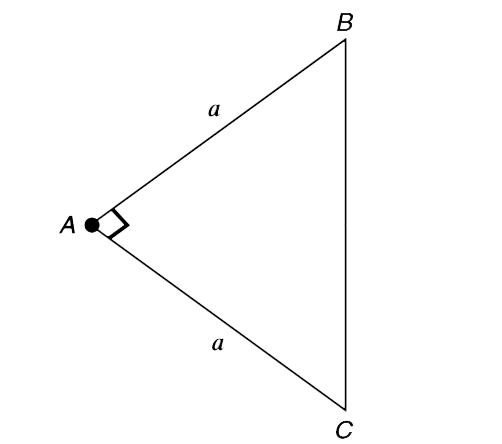
View SolutionAn equilateral triangular plate of mass 'm' is tied at the three vertices by threads S1,S2 and S3 respectively, keeping the plate in equilibrium such that the plane of plate is kept horizontal and three blocks of mass 'm' each, are connected to the corners of the plate as shown in figure. Side of the triangular plate is l. At t= 0, string 'S1' is burnt, then the tension in the sring S3 , just afterward , is
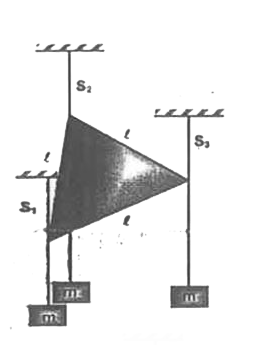
View SolutionTwo plates, each of area A, are placed parallel to each other at a distance d. One plate is connected to a battery of emf E and its negative is earthed. The other plate is also earthed. The charge drawn by plate is
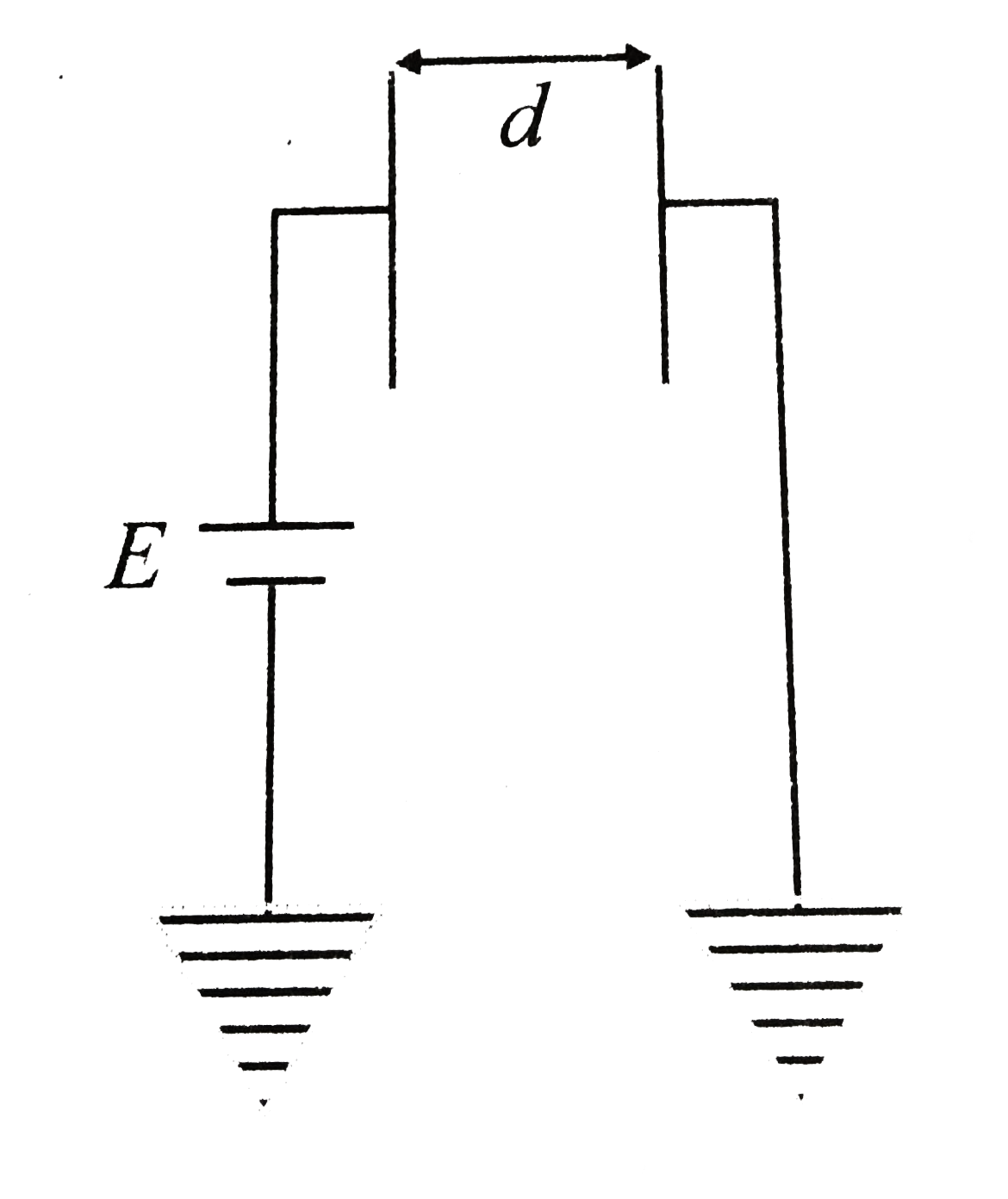
View Solution
